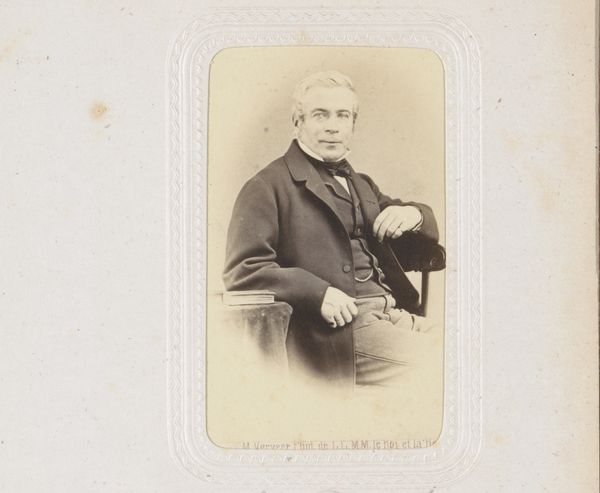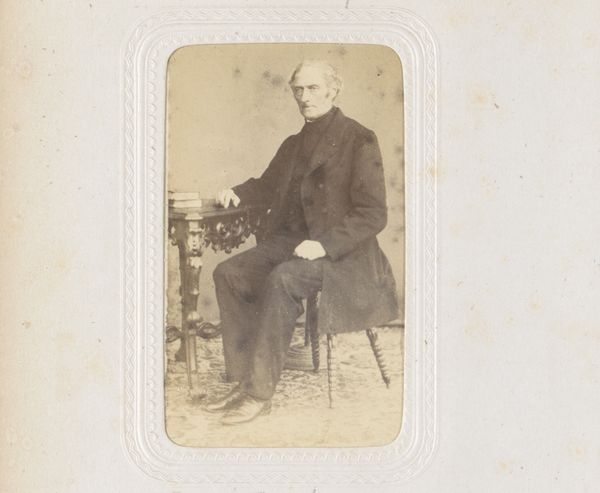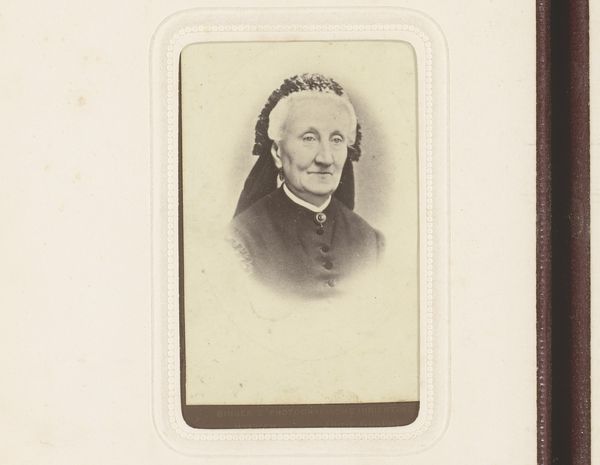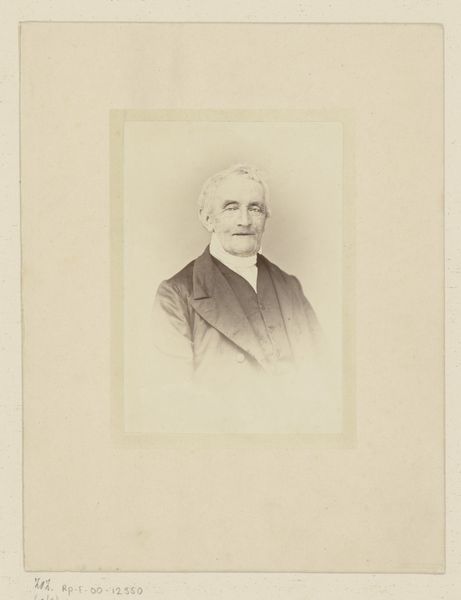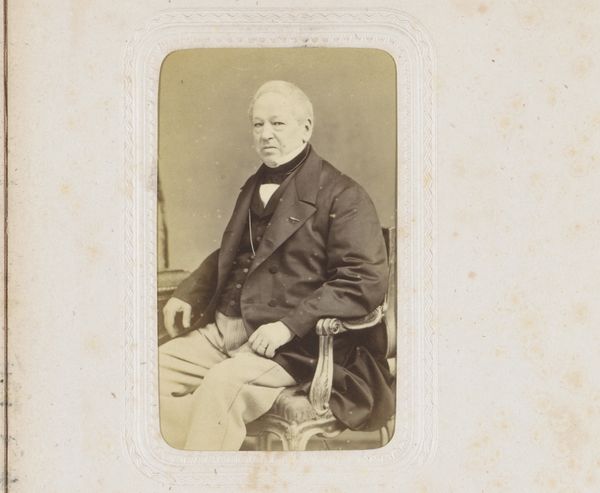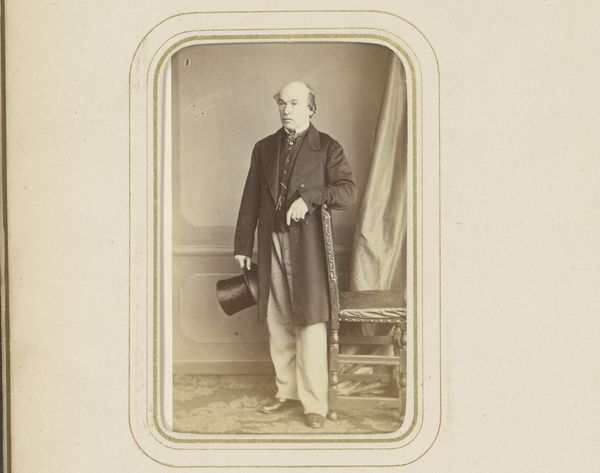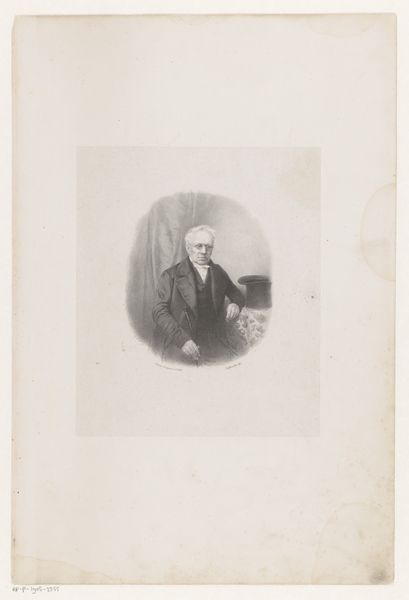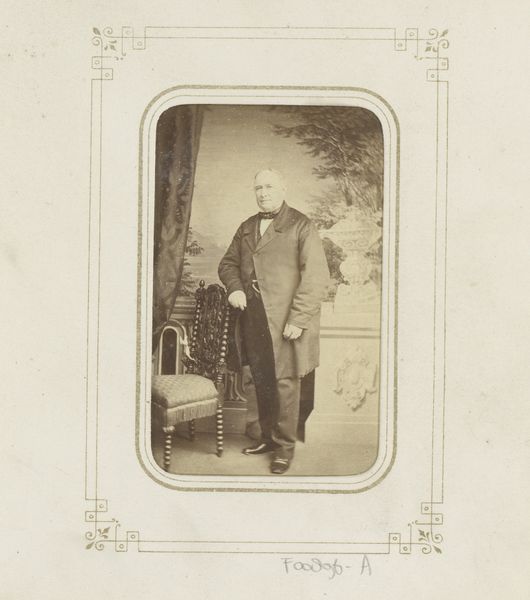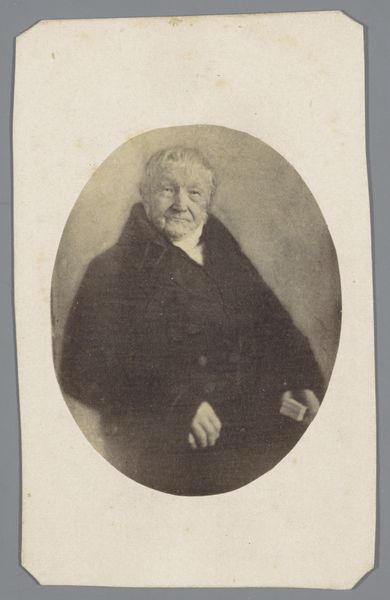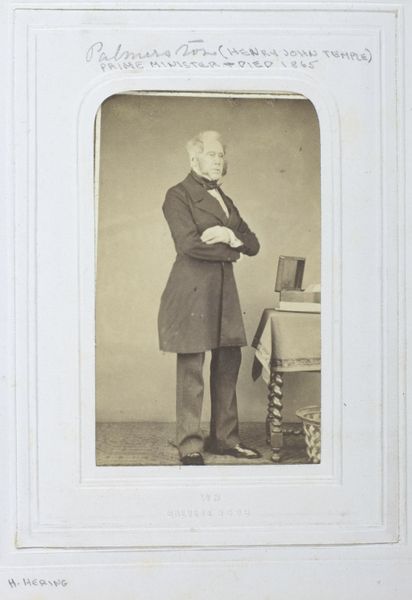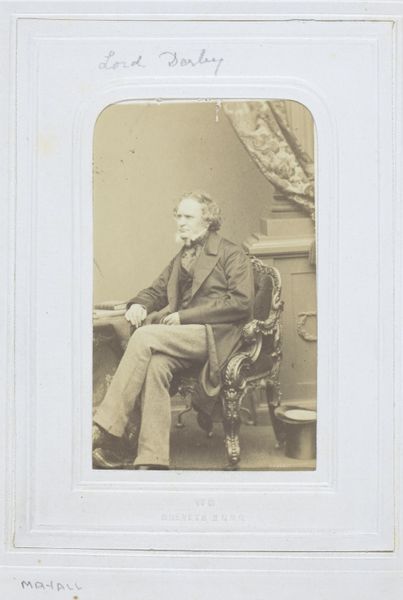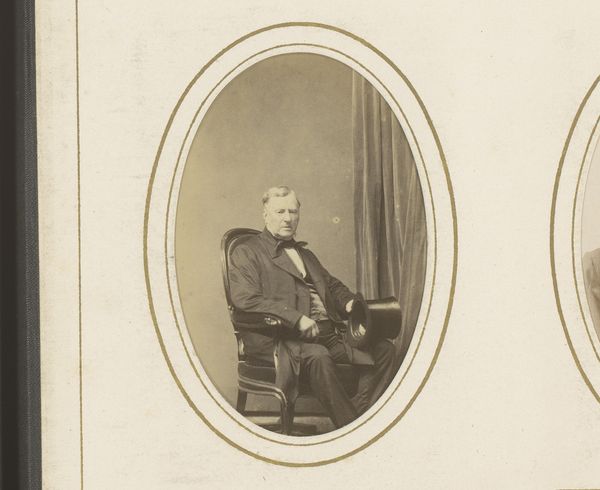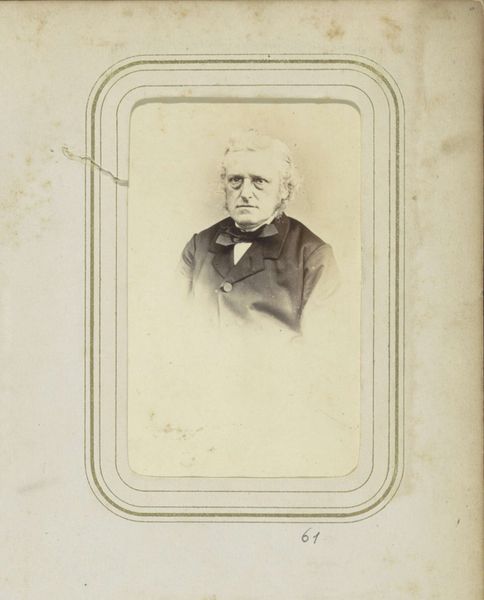
photography, gelatin-silver-print
#
portrait
#
archive photography
#
photography
#
historical photography
#
gelatin-silver-print
#
history-painting
Dimensions: height 84 mm, width 52 mm
Copyright: Rijks Museum: Open Domain
Carel Eduard Westerborg created this albumen print, a photographic process popular in the 19th century. It was made by coating paper with egg white and then a light-sensitive silver nitrate solution, creating a negative image that was then printed onto another albumen-coated paper and toned to create the sepia tone we see here. This technique, requiring a portable darkroom, camera, and meticulous preparation, was not just about capturing images but also about a certain social performance. In an era rapidly being reshaped by industrialization and capitalist expansion, the albumen print offered a tangible way to capture and preserve individual identity, particularly among the middle class, who could afford this luxury. The very act of sitting for a portrait, frozen in time through chemical processes, speaks to the changing relationship between labor, leisure, and the creation of value. The final product, with its unique texture and subtle variations, blurred the lines between art and craft. Westerborg's work reminds us to consider the cultural and economic forces shaping our understanding of both.
Comments
No comments
Be the first to comment and join the conversation on the ultimate creative platform.
